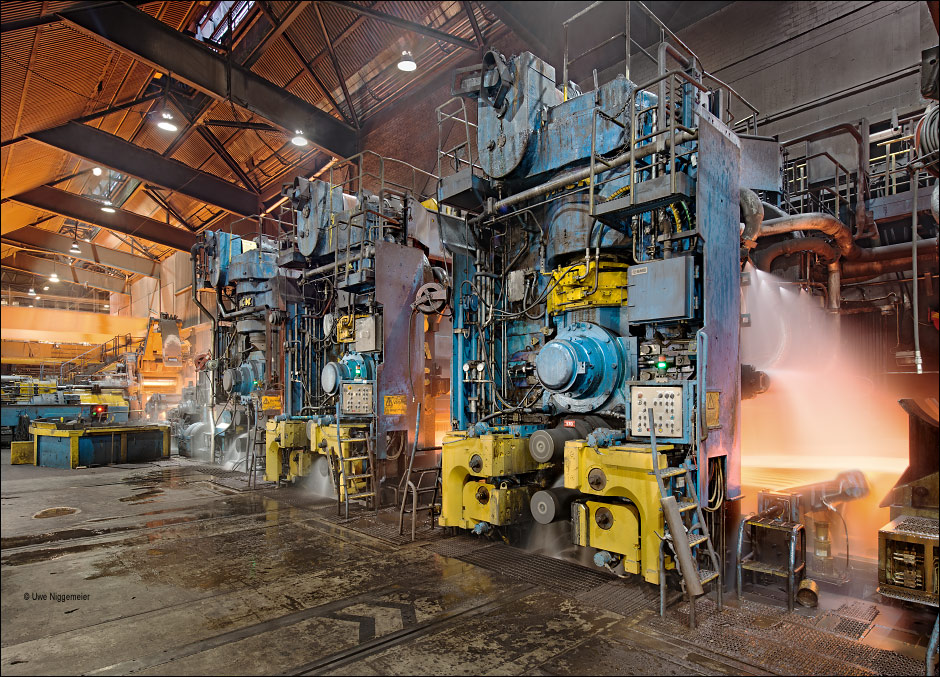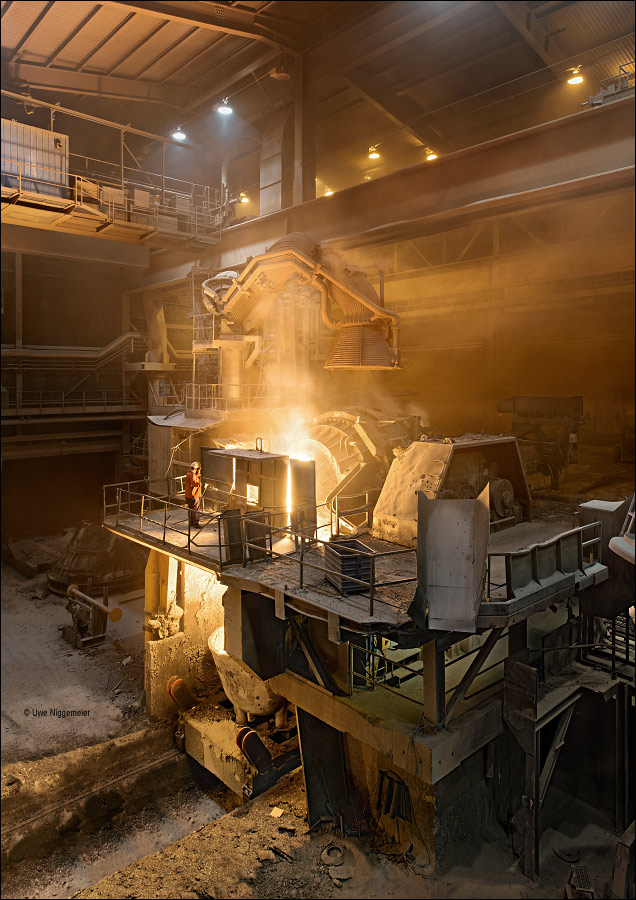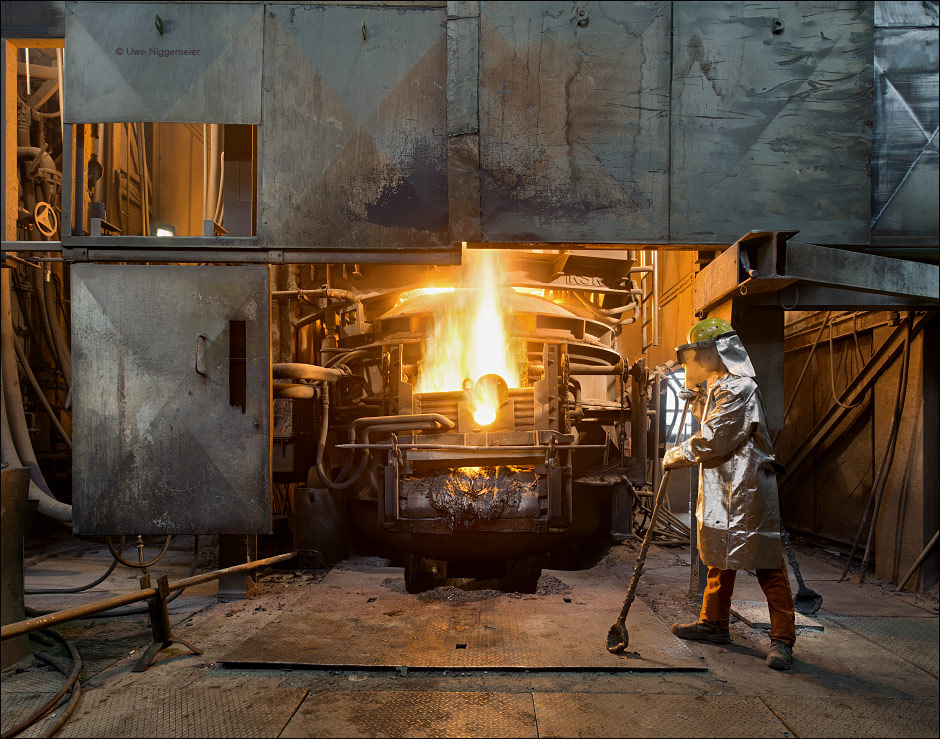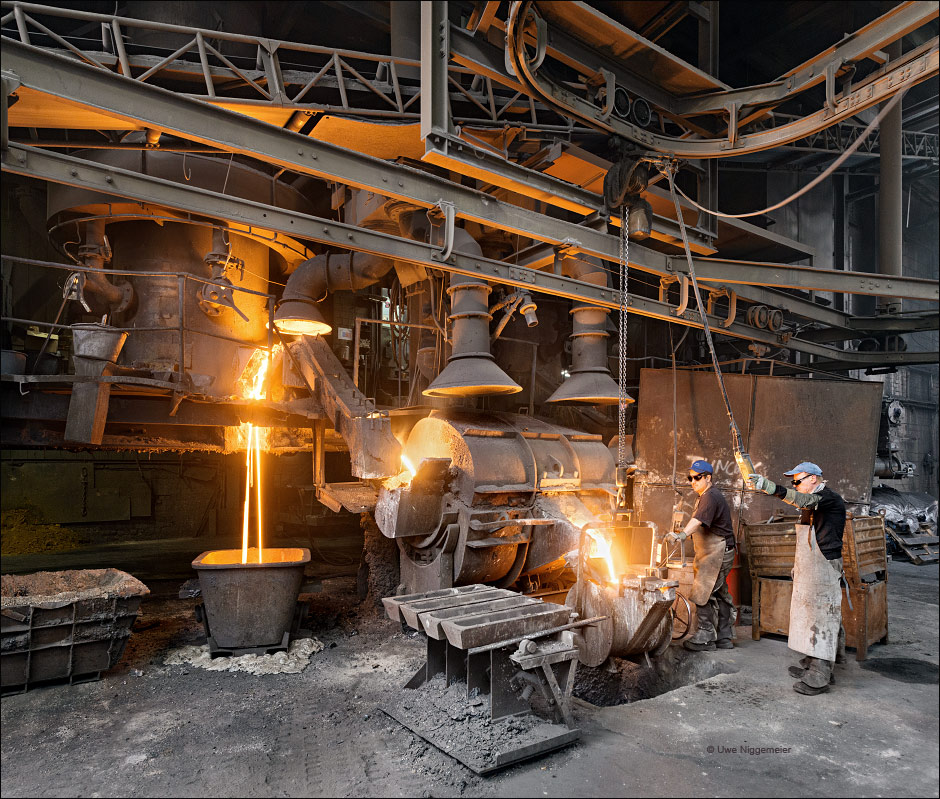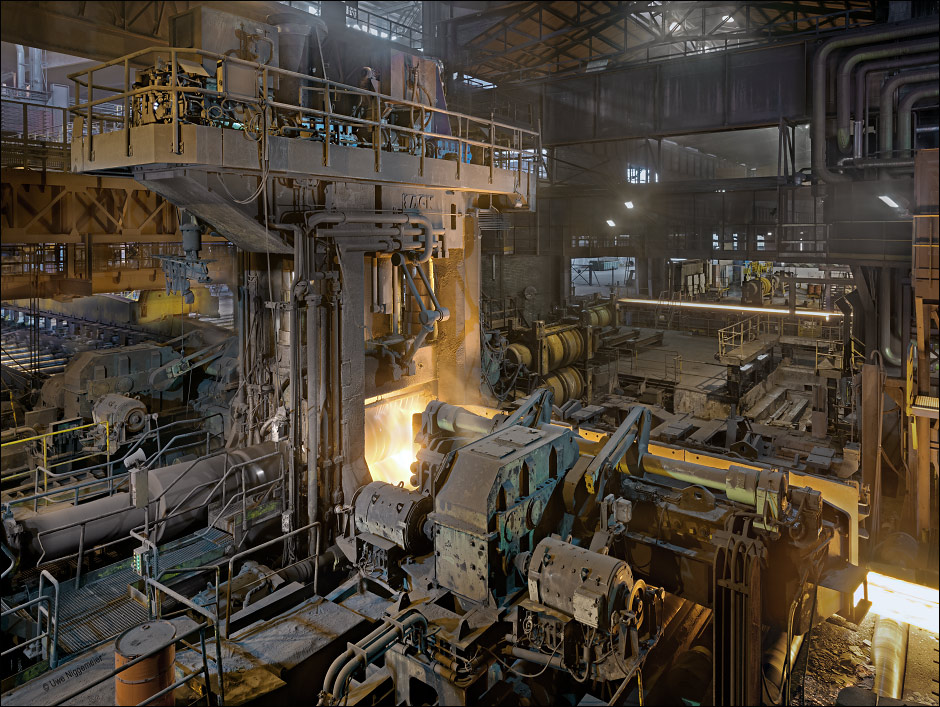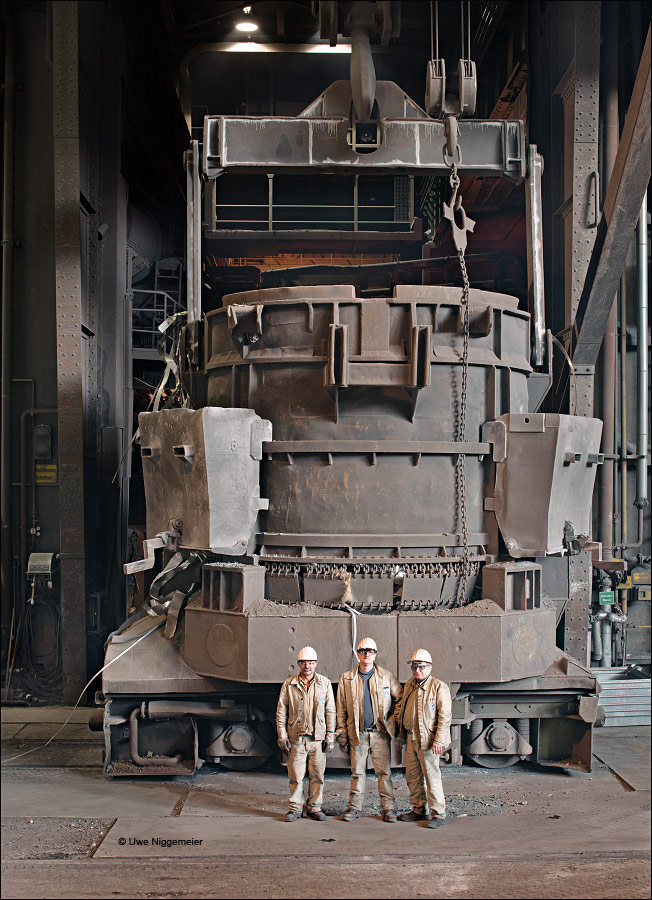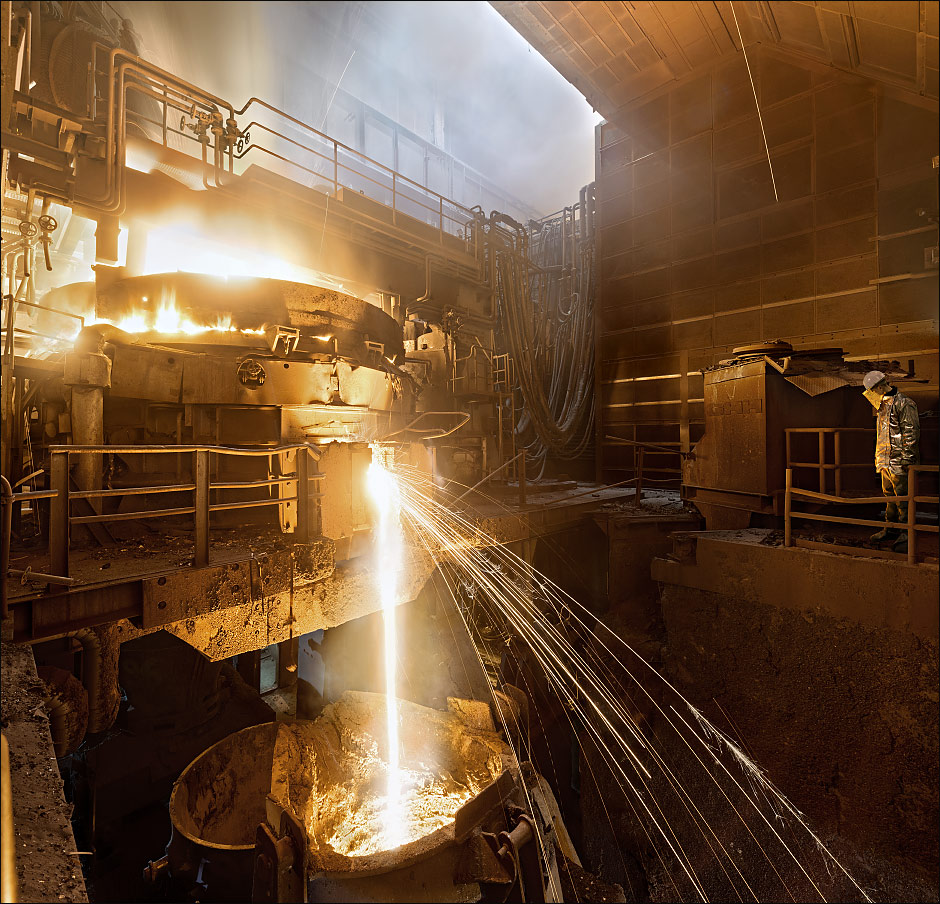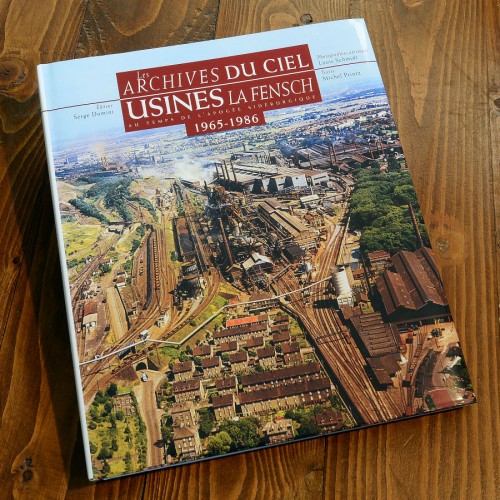
A new book showing rare aerial views of the five steel and iron mills that once shaped the Fensch valley in Lorraine, France.
The quality of the large format images done by Louis Schmidt mostly in the 1960ies is predominantly extraordinary.
There ain’t much text so you don’t need to learn French to enjoy this book.
The book is published by Serge Domini, 120 pages, ISBN: 978-2-35475-064-0.
These books are usually out of print very fast and become quite expensive after a while.
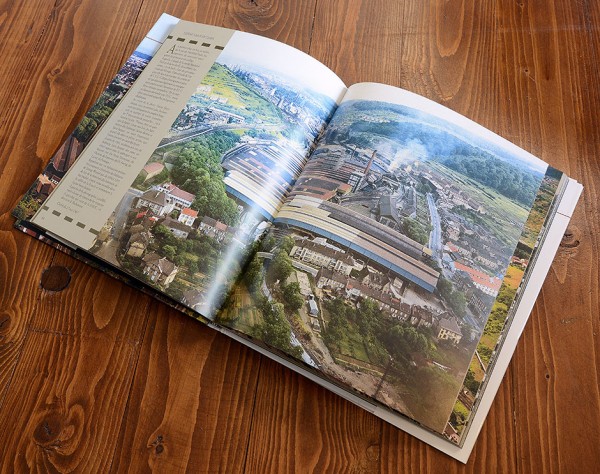
SSAB, Borlänge
Photos of Swedens only wide hot strip mill now on my website.
The steel works in Borlänge, Sweden were built in 1872 by Stora Kopparbergs Bergslags AB and named Domnarvets Jernverk.
A blast furnace was installed in 1878 and in the following years the mill became one of Sweden’s largest steel producers.
In the late 1940ies Professor Bo Kalling developed his rotating KALDO (KAlling-DOmnarvet) converter in Borlänge. The first 30 ton vessel became operable in 1954 capable of converting Sweden’s high phosphorous iron into high quality steel.
Though the process competed against the LD-process from Austria for a while it disappeared later due to it’s high maintenance costs especially for the lining.
The last Kaldo converter at the Domnarvets works was shut down, together with the four remaining blast furnaces, in 1981. Three years before Borlänge had become part of the newly established Svenskt Stål Aktiebolag (SSAB).
In 1989 steel making (now in an electric arc furnace) ended at Domnarvet and only the 1650 mm hot strip mill, installed in 1961 by the Sack company from Düsseldorf, Germany, continued to operate.
It was constantly modernised and obtained a new roughing stand from SMS in 1999.
Borlänge is now part of SSAB’s EMEA (Europe, Middle East, and Africa) division and receives it’s primary material in the form of slabs from SSAB’s integrated works in Lulea and Oxelösund.
Swedish Steel
One of the companies that helped to establish the legendary reputation of Swedish steel was Sandvik Jernwerks in Sandviken.
Images now at Stahlseite.
The plant was established in 1862 by the Swedish steel pioneer Göran Fredrik Göransson.
It was named Högbo Stal & Jernwerks.
Göransson was one of the first to purchase the British Bessemer patent and built a blast furnace and a Bessemer plant in Sandvik in 1863 already.
In 1868 the company was renamed and now called Sandvikens Jernwerks AB.
Rolling mills and forges were added in the following years.
In 1898 an open hearth shop was commissioned.
In 1908 four blast furnaces and six open hearth furnaces were in use.
Steel for rock drills became a major product.
The first electric arc furnace was installed in 1928.
The old Bessemer converters were shut down in 1947.
A new blooming mill was built in 1954 and a large electric arc furnace was taken into operation in 1959. The blast furnace department closed in 1960.
Today Sandvik Materials Technology is a subsidiary of the Sandvik group and produces high alloyed and stainless steel ingots, bars, strip and tubes.
Dörrenberg Edelstahl
A small steel mill with a long history. Dörrenberg Edelstahl in Engelskirchen-Ründeroth, Germany produces ingots, steel castings and investment castings.
Images now on my website.
The steel mill in Engelskirchen-Ründeroth was purchased by the Dörrenberg brothers in 1869 and subsequently became a leading producer of high alloyed tool steels.
A crucible steel making shop, hammer forges and mechanical shops were installed.
In 1916 an open hearth melt shop was commissioned.
The first induction furnaces used for steel production in Germany were built in 1928 in Ründeroth.
The electric arc furnace was commisioned in 1951. All forging activities ended in 1992. Since 1996 Dörrenberg Edelstahl is part of the Gesco-Group.
Foundry Capital
Velbert, Germany in the 1960ies was a busy town mainly living of it’s more than 30 foundries. 7000 people produced mostly small iron castings for household appliances, keys and the car industry.
Gestaguss is the last survivor of this once thriving business.
Further viewing at Stahlseite.
The Gestaguss foundry in Velbert was established in 1919 under the name Bergisch-Märkisches Eisenwerk (BME).
The BME specialized in malleable iron castings. Domestic appliances like meat grinders were built at their own workshop.
After 1990 the foundry filed bancruptcy several times and was taken over by the Gestaguss group in 2011.
The foundry produces castings with a weight of up to 30 kg from two cold blast cupola furnaces. It is one of the last malleable iron producers in Germany.
Stahl Gerlafingen
The old Von Roll site in Gerlafingen is the only carbon steel producer in Switzerland (the only other steel mill is Swiss Steel, producing speciality steels). Images now at Stahlseite.
The steel mill in Gerlafingen was founded in 1818 by Ludwig von Roll & Cie one of the oldest industrial enterprises in Switzerland. The company changed it’s name in 1823 and was now called Ludwig von Roll’sche Eisenwerke, a name they kept until the early 1960ies.The first Swiss rolling mill was installed in Gerlafingen in 1836 the second followed ten years later. Iron was produced from local ore deposits in a blast furnace in nearby Choindez.
Most raw materials for the rolling mill in Gerlafingen came from abroad though. After this supply become increasingly difficult during the first world war an open hearth melt shop was installed in 1918 and closed down in 1921. Steel was produced from now on in electric arc furnaces only. The top charging system for EAFs, now a worldwide standard, was invented here in the 1920ies.
From 1962 on the company called itself Von Roll AG.
After years of financial trouble the Von Roll AG sold it’s steel making branch to it’s competitor the Von Moss AG to form the new Swiss Steel company.
Swiss Steel was taken over by Schmolz & Bickenbach from Germany in 2003. S&B sold the Gerlafingen works to the Italian Beltrame group in 2006 to focus it’s activities on speciality steel making. Stahl Gerlafingen today runs a 70 ton electric arc furnace with a scrap preheating shaft, a continuous caster and two rolling mills (rod and wire). Main products are reinforced and structural steels.
Heavy Rolling
The Differdange, Luxembourg heavy sections mill holds the biggest roughing stand I have seen so far. The plant rolls the world’s largest beams (so called Jumbo Beams) with a weigth of up to 27 tons each.
The melt shop contains one of the last and the largest twin shell furnaces.
Further images now at Stahlseite.
Steel making in Differdange, Luxembourg started in 1900 on ground of the Société Anonyme des Hauts-Fourneaux de Differdange with three blast furnaces and a Thomas (Bessemer) steel plant.
From 1901 on the world famous wide-flange H-beams rolled directly from an ingot, invented by Henry Grey, were produced in Differdange. Seven years before the Bethlehem steel company installed a Grey mill in Pennsylvania.
In 1903 Differdange became part of German Entrepreneur Hugo Stinnes’ Deutsch-Luxemburgische Bergwerks- und Hütten-AG.
In 1920 the Hauts-Fourneaux et Aciéries de Differdange, St. Ingbert, Rumelange (HADIR) took over the site.
A narrow strip mill and a tube mill were installed in the 1950ies. A new converter steel mill and two new blast furnaces went into production in the 1960ies.
HADIR was absorbed by ARBED from Luxemburg in 1967.
A BOF shop was built in 1972.
The last blast furnaces was closed down in 1980.
In 1994 the new 150 ton twin shell DC-electric arc furnace started operation.
By 2002 ARBED merged with the French USINOR and the Spanish ACERALIA to form the world’s largest steel group ARCELOR. In 2006 ARCELOR was absorbed by Mittal Steel.
It’s Over
The Nirosta Krefeld melt shop was closed on Friday, 6th of December after more than 110 years of steel making.
I had the chance for a last visit three weeks before.
Now at my website.
The steel mill in Krefeld, Germany was established in 1900 by Carl Spaeter, Peter Klöckner and August Thyssen under the name Krefelder Stahlwerk AG. Open hearth steel production started in 1901. In 1907 three rolling mills were installed. In 1911 a tube mill was added. A forging press went into production in 1917.
In 1927 the Krefeld mill became part of the speciality steel group Deutsche Edelstahlwerke AG out of Bochum, Germany.
The first electric arc furnace was installed in 1930.
The new melt shop number 3 including two 70 ton electric arc furnaces was built by DEMAG in 1952.
A new wire mill started rolling in 1963.Open hearth steel making ceased in 1970.The year 1971 saw the complete takeover by the August Thyssen Hütte AG from Duisburg.
The new name from 1974 on was Thyssen Edelstahlwerke AG the Krefeld mill was merged now with Edelstahlwerk Witten AG.
In 1977 the first of two 80 ton AOD-converters was installed by the GHH company.Two rolling mills were closed in 1982.
In 1985 one electric arc furnace was modernised and the other one closed down. In 1989 the old melt shop NO 1 (30 ton furnace) was closed.The wire mill was shut down in 1993.
A new name in 1994: Edelstahlwerke Witten-Krefeld GmbH.
Krefeld merged with Krupp’s Bochum based stainless steel mill to form Krupp Thyssen Nirosta GmbH in 1995.
All forging activities in Krefeld came to EWK (now Deutsche Edelstahlwerke). A strip caster was installed in 2001.
VAI Siemens installed two new 80 ton AOD-converters in 2009.
The Finnish Outokumpu group takes over the Nirosta mills (now called Inoxum) in 2012.
Big Cupola V
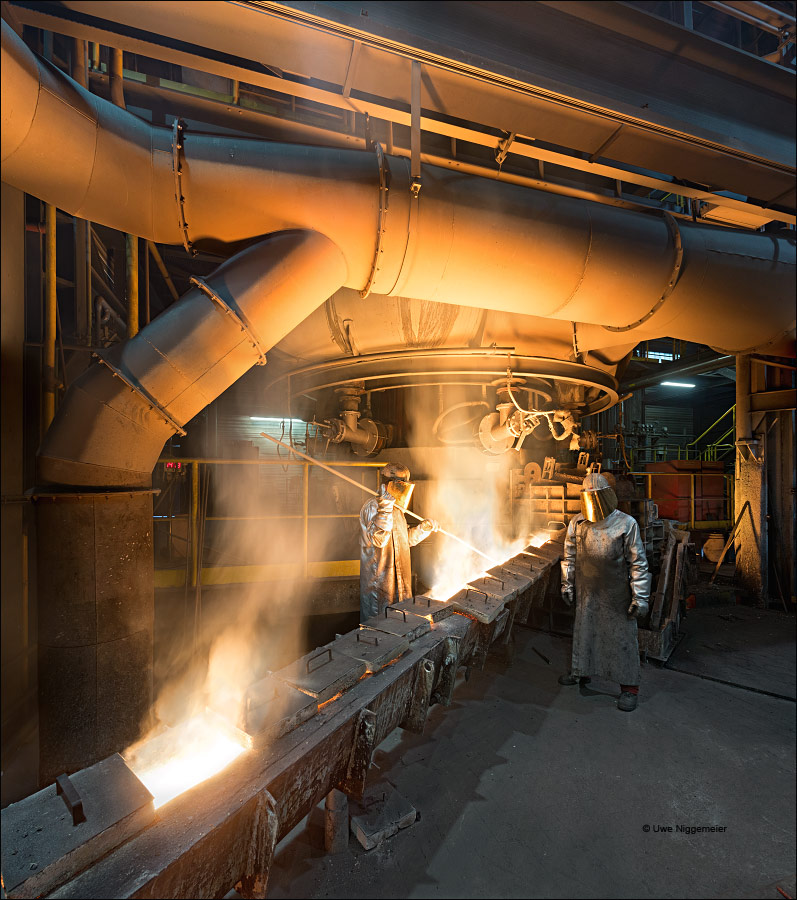
The Walter Hundhausen foundry was established in 1914 in Gevelsberg, Germany.
After WWI the company moved 25 km to Schwerte at the eastern edge of the Ruhr area.
In 1928 the production of black heart malleable castings started.
Heavy truck axle components became a main product after WWII.
Walter Hundhausen was taken over by the Hoesch steel company from Dortmund in 1989 and became part of Krupp Hoesch Automotive four years later. 1993 closure of the branch plant in Werdohl.
In 2000 the Walter Hundhausen iron foundry was taken over by the GMH group from Georgsmarienhütte.
A new large 40t/h cupola furnace replaced the old induction furnaces in 2008. The foundry employes more than 600 people.
Further images at Stahlseite.
Replaced By An EAF
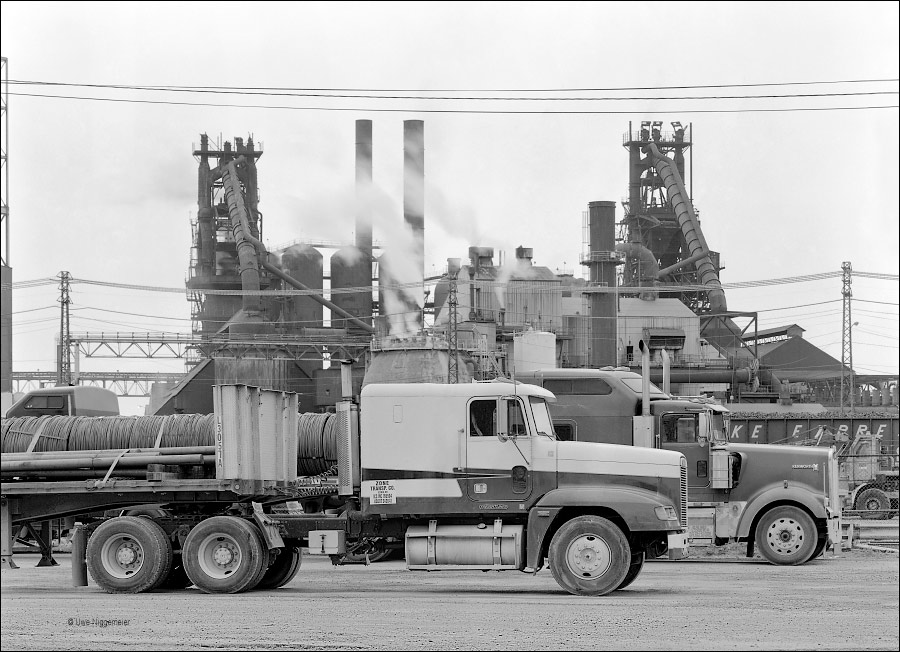
The Republic Steel company just fired up it’s new electric arc furnace in Loraine, Ohio. It replaces two blast furnaces and a BOF steel making shop idled five years ago.
Blast furnace No. 3 has a hearth diameter of 8,68 meters, furnace No 4 is 8,83 meters wide.
The BOF shop was built in 1971 and it contains two 220 ton vessels.

